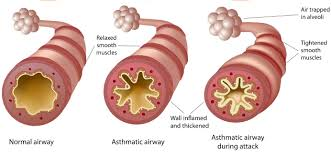A client with hypertension reports experiencing blurred vision intermittently over the last few weeks. What should the nurse explain to the client?
This problem may be related to the medications that are prescribed.
An ophthalmic examination should be scheduled to evaluate the symptoms.
Blurred vision is a common problem associated with hypertension.
Clients who have hypertension are at risk for brain tumors.
The Correct Answer is B
Choice A Reason
While some medications for hypertension can cause visual side effects, it is not the most immediate concern when a patient reports blurred vision. Medication-related side effects are important to consider, but they typically present consistently rather than intermittently.
Choice B Reason
An ophthalmic examination is crucial for evaluating intermittent blurred vision in a client with hypertension. Hypertension can lead to hypertensive retinopathy, where high blood pressure causes damage to the blood vessels in the retina, potentially resulting in blurred vision or vision loss. An eye exam can help diagnose this condition and prevent further complications.
Choice C Reason
Blurred vision can indeed be associated with hypertension, particularly in severe cases or hypertensive crises. However, it is not considered a 'common' problem but rather a sign of potential end-organ damage, such as hypertensive retinopathy, which requires prompt medical evaluation.
Choice D Reason
The risk of brain tumors is not directly associated with hypertension. While hypertension is a risk factor for certain conditions like stroke, it is not typically linked with an increased risk of brain tumors. This choice might cause unnecessary alarm without a clinical basis.
Nursing Test Bank
Naxlex Comprehensive Predictor Exams
Related Questions
Correct Answer is A
Explanation
Choice A Reason
Petechiae on the chest are a classic sign of fat emboli syndrome (FES). FES is a rare but serious complication that can occur after a long bone fracture, such as a femur fracture. The petechiae result from small fat droplets that travel to the skin's capillaries and cause pinpoint hemorrhages. This symptom is part of the classic triad for FES, which includes respiratory distress, neurological symptoms, and a petechial rash.
Choice B Reason
While an edematous calf may be a concern for deep vein thrombosis or other complications following a fracture, it is not a specific indicator of FES. Edema in the calf could be due to various reasons, including local trauma from the fracture itself or immobilization.
Choice C Reason
An elevated temperature can be associated with many post-injury complications, including infection or inflammatory response. However, it is not specific to FES. While patients with FES may present with fever, it is not one of the primary diagnostic criteria.
Choice D Reason
Paresthesia distal to the fracture could indicate nerve damage or compartment syndrome, which are important to assess in a patient with a femur fracture. However, paresthesia is not a specific sign of FES. The neurological symptoms associated with FES are more generalized and often include confusion or altered mental status.
Correct Answer is B
Explanation
Choice A Reason:
Using accessory muscles while breathing is a sign of respiratory distress and indicates that the client is working harder to breathe. This is not a desired outcome of treatment and suggests that the asthma exacerbation is not under control.
Choice B Reason:
The ability to answer questions in full sentences suggests that the client's airway is not severely obstructed, which is a positive sign of effective asthma treatment. When asthma is well-controlled, individuals should not experience significant shortness of breath that limits their ability to speak.
Choice C Reason:
Diminished breath sounds can be a sign of severe airway obstruction and are not indicative of effective asthma treatment. Ideally, lung auscultation should reveal clear breath sounds without wheezing, indicating good air movement throughout the lungs.
Choice D Reason:
Restlessness and anxiety can be symptoms of hypoxia, a condition where the body or a region of the body is deprived of adequate oxygen supply. This is not a sign of effective asthma treatment and may indicate that the client's asthma is not well-managed.

Whether you are a student looking to ace your exams or a practicing nurse seeking to enhance your expertise , our nursing education contents will empower you with the confidence and competence to make a difference in the lives of patients and become a respected leader in the healthcare field.
Visit Naxlex, invest in your future and unlock endless possibilities with our unparalleled nursing education contents today
Report Wrong Answer on the Current Question
Do you disagree with the answer? If yes, what is your expected answer? Explain.
Kindly be descriptive with the issue you are facing.
